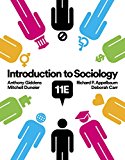6-2023-PAIP-Study-Guide
pdf
keyboard_arrow_up
School
Judson University *
*We aren’t endorsed by this school
Course
100
Subject
Sociology
Date
Apr 3, 2024
Type
Pages
9
Uploaded by MajorEnergyKudu36
Candidate Study Guide for the Illinois Partner Abuse Intervention Professional Examination The following information is intended to help you prepare for the Illinois Partner Abuse Intervention Professional (PAIP) Examination. Part I of this study guide contains general information about the profession and testing procedures. Part II provides a content outline, lists the competencies covered in the examination, and identifies reference materials that support each part of this Examination. Part III includes sample questions to help you prepare for this test. Part I General Information PURPOSE OF THE EXAMINATION
This examination has been developed in collaboration with Illinois Certified Domestic Violence Professionals, Inc., to ensure that certification is granted only to professionals who are familiar with domestic violence practices, rules and regulations that will protect the health, safety and welfare of the public. TEST VALIDITY
The time limit for this examination is two hours. This examination has been developed to meet strict standards of test fairness and validity in consultation with a committee of experienced domestic violence and partner abuse intervention professionals. PHOTO ID Each candidate must present a photo ID and a valid admission notice to be admitted to any of these examinations. Only a valid Driver’s License, Secretary of State ID card, or a current passport is acceptable as photographic identification. If the name on the photo ID does not match the name on the admission notice, proof of legal name change also must be presented before the candidate can be admitted to an examination. SPECIAL ACCOMODATIONS Any candidate who needs special accommodations in test-taking procedures because of a disabling condition must communicate that need in writing with his or her application. No accommodations can be arranged on the day of a test. SCORING THE EXAMINATION
Candidates who pass the test will receive a certificate from Illinois Certified Domestic Violence Professionals, Inc. MISSING AN EXAMINATION
There are no "make-up" examinations. You may re-register for the next scheduled examination date. RE-EXAMINATION
Candidates who fail the test will receive an application to retake the examination and information to help them identify content areas on which they need to improve their performance. (c) June 2023, Continental Testing Services, Inc.
Page 2 Part II Test Content and Recommended Study Materials This examination was developed in collaboration with a committee of experienced domestic violence and partner abuse intervention professionals. Content areas on the test are outlined below. All of the study materials for this examination are identified on page three of this study guide. This examination is organized into the following seven content areas. A. Philosophy of Abuser Services 10 questions 1. Historical perspectives 2. Definitions/importance of feminist perspective 3. Myths & misconceptions of abuse 4. Coordinated community response B. The Batterer 7 questions 1. Beliefs & behaviors 2. Cycle of violence C. Assessment Skills 10 questions 1. Screening, assessment & exclusion criteria 2. Drug/alcohol/mental health issues & services 3. Lethality assessment D. Intervention Methods 12 questions 1.
Education for change & confronting beliefs 2.
Working with resistant clients 3.
Limitations of intervention 4.
Assessing progress/readiness for termination 5.
Teaching non-violent living skills E. Role of the Facilitator 8 questions 1. Facilitato
r’s role as victim advocate
2. Group facilitation skills 3. Role modeling/gender balance 4. Self care F. Legal & Ethical Issues 20 questions 1.
Orders of protection: Types, remedies & enforcement 2.
Firearms 3.
Duty to warn/report threats & violations 4.
Victim contact/victim safety 5.
Child abuse & elder abuse reporting G. Cultural Issues 8 questions 1. Race, ethnicity, immigration & cultural experience 2. Dynamics & cycle of oppression 3. Same sex partner violence
Page 3 Recommended Study Materials The following references support the questions on this examination. These books may be available at retail stores and in public and academic libraries. They also are available online from Amazon.com, Barnes and Noble (bn.com) and Borders.com as well as directly from the publishers. ICDVP selected the following references as the best available sources to represent knowledge and competencies that should be familiar to a certified professional. While these references support questions in content areas important to safe and effective practice, ICDVP does not recommend any particular service model or endorse every statement in these sources. However, ICDVP affirms that domestic violence professionals should be familiar with the issues addressed in these sources.
Bancroft, Lundy & Silverman, Jay G.
The Batterer as Parent, 2
nd
Edition
(2012). Sage Series on Violence Against Women. Publisher: Sage Publications. Website: www.sagepub.com Pence, Ellen, and Paymar, Michael.
Education Groups for Men Who Batter: The Duluth Model
(1993). Publisher: Springer Publishing Company Wilson, K.J.
When Violence Begins at Home, 2
nd
Edition (2005). Publisher: Hunter House Inc., Publishers Website: www.hunterhouse.com Additional References Available at www.ilcdvp.org 1.
Bergen, Raquel K., “Marital Rape: New Research and Directions.” 2006. National Resource Center on Domestic Violence (NRCDV). Available at http://www.vawnet.org/applied-research-papers/print-document.php?doc_id=248.. 2.
Illinois Domestic Violence Act Revised 2015
Publisher: Illinois Coalition Against Domestic Violence 3.
Illinois Administrative Code 501, Partner Abuse Intervention. Illinois Department of Social Services. 2014. Available at https://ilga.gov/commission/jcar/admincode/089/08900501sections.html
4.
A Manual for Mandated Reporters
(2015). Publisher: Illinois Department of Children and Family Services Available at: https://www.illinois.gov/dcfs/safekids/reporting/Documents/cfs_1050-
21_mandated_reporter_manual.pdf 5.
Reporting Adult Abuse: What Professionals Need to Know
(2014). Publisher: Illinois Department on Aging Available at: www.state.il.us/aging 6.
Safety & Sobriety: Best Practices in Domestic Violence and Substance Abuse (2005). Publisher: Illinois Department of Human Services, Domestic Violence/Substance Abuse Interdisciplinary Task Force. Available at: http://www.dhs.state.il.us/OneNetLibrary/27897/documents/CHP/DSVP/SafetySobrietyManual.pdf
Your preview ends here
Eager to read complete document? Join bartleby learn and gain access to the full version
- Access to all documents
- Unlimited textbook solutions
- 24/7 expert homework help
Page 4 Part III Sample Questions All questions on this examination are multiple-choice with one correct answer. Each question is supported by study materials cited in this bulletin. The answer key and references for each question in this sample test appear after these questions. 1. When did shelters for victims of domestic violence begin to emerge in significant numbers within the U.S.? A.
As soon as women won the right to vote in the 1920s B.
After protests of domestic abuse in England in the 1970s C.
Soon after most states criminalized wife abuse in the 1870s D.
Soon after the Illinois Domestic Violence Act was amended in 1993 2. Which of these was most responsible for creation of the National Coalition Against Domestic Violence (NCADV) in 1978? A. The U.S. Commission on Civil Rights B. The federal Office on Domestic Violence C. Formation of the National Organization for Women (NOW) D. New legislation increasing penalties for domestic violence and abuse 3. Which of these is included in the Illinois Domestic Violence Act definition of intimidation of a dependent? A. Repeatedly keeping a petitioner under surveillance B. Failure to provide adequate food, shelter or clothing C. Creating a disturbance at a petitioner’s place of employment
D. Witnessing the physical confinement of another person 4. Communities help hold batterers accountable in all of the following ways EXCEPT
A. by c
hallenging claims that abusers’ controlling behavior is provoked.
B. by refusing to accept batterers blaming their behavior on family history. C. by encouraging intervention with victims and batterers as couples. D. by promoting awareness of the damage that can result from abusive beliefs and choices. 5. Which of these is LEAST
likely to be used by a batterer to justify abusive behavior? A. Claiming loss of control B. Minimizing the abuse C. Blaming the victim D. A dual personality
Page 5 6. Which statement most accurately describes the sense of entitlement that many batterers display in their family relationships? A. Batterers often shift between focus on themselves and being considerate of other family members’ needs.
B. Batterers usually expect all family members to focus entirely on the batterers’ needs while ignoring their own. C. Batterers often insist that their family members should receive more favorable treatment than anyone else. D. Batterers usually ask for more than they expect to receive to protect themselves from disappointment. 7. Which statement most accurately describes the tension-building stage of the cycle of violence? A. Abusers often become nurturing and contrite after a violent episode. B. Victims often become compliant and nurturing to avoid another episode. C. Batterers often appear calm and apologetic about past violent episodes. D. Victims and batterers often promise each other that they will change their behavior. 8. Which of these most accurately describes behavior in which an abuser refuses to allow a partner to get or keep a job? A.
Social abuse B.
Manipulation C.
Financial abuse D.
Emotional abuse 9. Which of these are most likely to be among the effects of domestic violence? A. Victims accepting blame for their abuse B. Abusers accepting blame for their abuse C. Abusers changing jobs to increase family income D. Victims finding work to establish economic independence 10. Which of these indicates that a batterer has accepted responsibility for prior abusive behavior after the partners have separated? A. Asking their children to express an apology for past abusive behavior B. Explaining reasons for prior abuse based on the batterer’s loss of control
C. Agreeing to limit contact with the partner’s friends and family D. Trying to reach the partner to express regrets and apologize for past abuses
Page 6 11. Under which of these circumstances are victims of domestic abuse at greatest risk for further violence? A. After separation or filing for divorce from the abuser B. While sleeping at home with the abuser C. After seeking an order of protection D. During a visit to a qualified shelter 12. Which of these normally is NOT
required before information can be released about substance abuse treatment involving a batterer? A.
The purpose of the disclosure B.
A description of the information to be released C.
A statement from the batterer admitting to past abusive behavior D.
The names of any people or programs who may receive the information 13. Which of these is most likely to be an effective intervention strategy to encourage batterers to confront and change their beliefs? A. Refuse to accept any excuses when a batterer does not follow the rules. B. Ask the criminal or family courts to define appropriate behaviors. C. Avoid confrontation with the batterer over perceived offenses. D. Insist on anger management training as part of any program. 14. Which of these is appropriate for domestic violence intervention? A. Models that rely entirely on pastoral counseling B. Models that promote understanding the negative effects of abuse C. Models that focus solely on teaching anger management techniques D. Models that require a victim to attend counseling 15. Which of these is the most important tool for helping participants learn to work cooperatively with a partner? A. The Abusive Behavior Inventory B. The Power and Control Wheel C. The Equality Wheel D. The Control Log 16. Effective intervention programs A. may rely on anger management when nothing else is available. B. s
hould address all of the typical abuser’s problems
. C. must challenge issues of aggression as a method of conflict resolution. D. seldom last long enough to ch
ange an abuser’s behavior.
Your preview ends here
Eager to read complete document? Join bartleby learn and gain access to the full version
- Access to all documents
- Unlimited textbook solutions
- 24/7 expert homework help
Page 7 17. Which of these is appropriate for a facilitator in a batterer intervention program? A. To challenge participants’ views of themselves as victims
B. To encourage participants to vent their anger toward partners C. To report all expressions of anger by a participant to the partner D. To write letters of support for participants who perform well in the group 18. When does the Illinois Administrative Rules for Partner Abuse Intervention Programs
allow a former abuser to serve as a facilitator in a batterer program? A. Only with the approval of the sentencing court B. Only after being abuse-free for at least five years C. Only when the co-facilitator has five years of experience D. Only when the abuser expresses sincere remorse for past abuse 19. Which of these is NOT
among the mental symptoms when workers who serve batterers or their partners are under stress? A. Dulled senses B. Forgetfulness or confusion C. Gradual increase in concentration D. Negative attitudes and self-criticism
20. How does the Illinois Domestic Violence Act define a domestic violence advocate? A. Only professionals trained to evaluate specific forms of abuse B. Any employee or volunteer providing services to victims of abuse C. Only professionals with protected rights of privileged communication D. Any employee or volunteer with at least 40 hours of training in domestic violence advocacy who provides services to victims of abuse
through a victim services agency
21. Under the federal Violence Against Women Act, which statement most accurately describes enforcement of an order of protection? A. All jurisdictions must enforce the order for the victim’s safety. B. Only the local court can reinterpret an order of protection. C. Out-of-state jurisdictions may reinterpret the order at their own discretion. D. Jurisdictions must enforce the order only under local and state laws at the time of the enforcement request.
Page 8 22. Which statement most accurately describes firearms possession under the federal Violence Against Women Act? A. State firearms registration laws supercede federal law. B. A police officer who is convicted of domestic violence may not possess a firearm or ammunition. C. In most cases, federal law prohibits a person who has been convicted of domestic violence to possess a firearm or ammunition. D. No one named in a valid order of protection may purchase a firearm. 23. Which of these does the Illinois Abused and Neglected Children Reporting Act require to authorize investigations of suspected child abuse? A. Visible evidence of the abuse B. The name of the suspected abuser C. Substantial risk of harm to the child D. The date and location of the suspected abuse 24. Which of these is LEAST
important in a report of suspected adult abuse, neglect or financial exploitation? A. Whether the victim is aware of the report B. Whether there is any danger to an investigator C. Whether the alleged victim is in immediate danger D. Whether the suspected abuser is aware of the report 25. Which of these factors is most likely to account for higher rates of domestic violence among low-income families? A. Additional obstacles poor women may face before leaving a relationship B. Higher tolerance of domestic violence in low-income households C. Discrimination against low-income partners by police and courts D. Stereotypes about males in low-income and minority groups 26. Which of these is most likely to be part of the make-up phase of the cycle of violence in an abusive relationship? A. Periods when no episodes of physical abuse occur B. Breakdowns in communication in the relationship C. Blaming the victim for causing the abusive episode D. Perception by the victim that he/she is “walking on egg shells”
Page 9 27. Which of the following is an example of transphobia? A. Making someone else afraid of something by describing your fear of it. B. Being worried that changes as a result of counseling will cause you to lose old friends. C. Using fear and hatred of anyone who challenges traditional gender expression to convince your partner to conform to gender norms. D. Fear of potential negative consequences of transference. Answers and References for Sample Questions This sample illustrates the types of questions that appear on the examination. The references that support each question are indicated below to help you prepare for this examination. Specific page numbers in some of the supplemental references may change when state departments issue revisions of the referenced documents. Sample
Correct
Question Test Content Area Answer Supporting Reference(s) 1. Philosophy of Abuser Services B Pence, pages 172-73 2. Philosophy of Abuser Services A Wilson 2
nd
Ed, pages 340-46 3. Philosophy of Abuser Services D IDVA 2
nd
Ed, page 3 4. Philosophy of Abuser Services C Illinois Code 501.90 & Appendix A 5. The Batterer D Wilson 2
nd
Ed, pages 23-28 6. The Batterer B Bancroft 2012, pages 7-17 7. The Batterer B Wilson 2
nd
Ed, pages 28-29 8. The Batterer C Wilson 2
nd
Ed, page 19-20 9. The Batterer A Wilson 2
nd
Ed, pages 23-26 10. Assessment Skills C Illinois Code 501.Appendix A; Bancroft, pp. 167-70 11. Assessment Skills A Wilson 2
nd
Ed, pages 30-31, 195 12. Assessment Skills C Safety & Sobriety, pages 41-43 13. Intervention Methods A Bancroft 2012, pages 197-213 14. Intervention Methods B Illinois Code 501.90 b & c 15. Intervention Methods C Pence, pages 183-7 16. Intervention Methods C Illinois Code 501 Appendix A 17. Role of the Facilitator A Pence, pages 67-71 18. Role of the Facilitator B Illinois Code 501.90d2 19. Role of the Facilitator C Wilson 2
nd
Ed, pages 291-93 20. Legal & Ethical Issues D IDVA 2009, pages 32-34 21. Legal & Ethical Issues A IDVA 2009, pp. 54-5; Russell, pages 8-10 22. Legal & Ethical Issues C IDVA 2009, pp. 54-5; Russell, pp. 14-16 23. Legal & Ethical Issues C Manual for Mandated Reporters, pp. 8-9 24. Legal & Ethical Issues D Reporting Adult Abuse, pages 5-8 25. Cultural Issues A Bancroft 2012, pages 26-30 26. Cultural Issues A Safety & Sobriety, Appendices, page 133 27. Cultural Issues C Safety & Sobriety, Appendices, page 122
Your preview ends here
Eager to read complete document? Join bartleby learn and gain access to the full version
- Access to all documents
- Unlimited textbook solutions
- 24/7 expert homework help
Related Documents
Recommended textbooks for you

Social Psychology (10th Edition)
Sociology
ISBN:9780134641287
Author:Elliot Aronson, Timothy D. Wilson, Robin M. Akert, Samuel R. Sommers
Publisher:Pearson College Div

Introduction to Sociology (Eleventh Edition)
Sociology
ISBN:9780393639407
Author:Deborah Carr, Anthony Giddens, Mitchell Duneier, Richard P. Appelbaum
Publisher:W. W. Norton & Company

The Basics of Social Research (MindTap Course Lis...
Sociology
ISBN:9781305503076
Author:Earl R. Babbie
Publisher:Cengage Learning

Criminalistics: An Introduction to Forensic Scien...
Sociology
ISBN:9780134477596
Author:Saferstein, Richard
Publisher:PEARSON

Sociology: A Down-to-Earth Approach (13th Edition)
Sociology
ISBN:9780134205571
Author:James M. Henslin
Publisher:PEARSON

Society: The Basics (14th Edition)
Sociology
ISBN:9780134206325
Author:John J. Macionis
Publisher:PEARSON
Recommended textbooks for you
 Social Psychology (10th Edition)SociologyISBN:9780134641287Author:Elliot Aronson, Timothy D. Wilson, Robin M. Akert, Samuel R. SommersPublisher:Pearson College Div
Social Psychology (10th Edition)SociologyISBN:9780134641287Author:Elliot Aronson, Timothy D. Wilson, Robin M. Akert, Samuel R. SommersPublisher:Pearson College Div Introduction to Sociology (Eleventh Edition)SociologyISBN:9780393639407Author:Deborah Carr, Anthony Giddens, Mitchell Duneier, Richard P. AppelbaumPublisher:W. W. Norton & Company
Introduction to Sociology (Eleventh Edition)SociologyISBN:9780393639407Author:Deborah Carr, Anthony Giddens, Mitchell Duneier, Richard P. AppelbaumPublisher:W. W. Norton & Company The Basics of Social Research (MindTap Course Lis...SociologyISBN:9781305503076Author:Earl R. BabbiePublisher:Cengage Learning
The Basics of Social Research (MindTap Course Lis...SociologyISBN:9781305503076Author:Earl R. BabbiePublisher:Cengage Learning Criminalistics: An Introduction to Forensic Scien...SociologyISBN:9780134477596Author:Saferstein, RichardPublisher:PEARSON
Criminalistics: An Introduction to Forensic Scien...SociologyISBN:9780134477596Author:Saferstein, RichardPublisher:PEARSON Sociology: A Down-to-Earth Approach (13th Edition)SociologyISBN:9780134205571Author:James M. HenslinPublisher:PEARSON
Sociology: A Down-to-Earth Approach (13th Edition)SociologyISBN:9780134205571Author:James M. HenslinPublisher:PEARSON Society: The Basics (14th Edition)SociologyISBN:9780134206325Author:John J. MacionisPublisher:PEARSON
Society: The Basics (14th Edition)SociologyISBN:9780134206325Author:John J. MacionisPublisher:PEARSON

Social Psychology (10th Edition)
Sociology
ISBN:9780134641287
Author:Elliot Aronson, Timothy D. Wilson, Robin M. Akert, Samuel R. Sommers
Publisher:Pearson College Div

Introduction to Sociology (Eleventh Edition)
Sociology
ISBN:9780393639407
Author:Deborah Carr, Anthony Giddens, Mitchell Duneier, Richard P. Appelbaum
Publisher:W. W. Norton & Company

The Basics of Social Research (MindTap Course Lis...
Sociology
ISBN:9781305503076
Author:Earl R. Babbie
Publisher:Cengage Learning

Criminalistics: An Introduction to Forensic Scien...
Sociology
ISBN:9780134477596
Author:Saferstein, Richard
Publisher:PEARSON

Sociology: A Down-to-Earth Approach (13th Edition)
Sociology
ISBN:9780134205571
Author:James M. Henslin
Publisher:PEARSON

Society: The Basics (14th Edition)
Sociology
ISBN:9780134206325
Author:John J. Macionis
Publisher:PEARSON